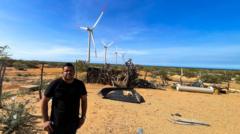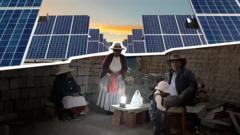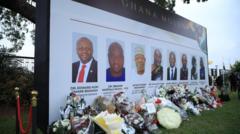As Colombia advances its shift from fossil fuels to renewable energy, the Wayuu community in La Guajira faces both promise and disruption due to nearby wind farms, raising concerns about cultural integrity, fair compensation, and representation.
Colombia's Indigenous Communities Weigh Benefits and Burdens of Wind Energy Projects

Colombia's Indigenous Communities Weigh Benefits and Burdens of Wind Energy Projects
A complex interplay of progress and cultural disruption marks Colombia's transition to renewable energy, particularly for the Wayuu indigenous group.
In the serene landscapes of La Guajira, northern Colombia, José Luis Iguarán stands amidst the shadows of towering wind turbines—an emblem of the nation’s embrace of renewable energy. For the Wayuu indigenous community, which has resided in this arid region for centuries, these modern structures are a stark contrast to the traditional lifestyle of herding goats, fishing, and cultivating crops.
While the winds of La Guajira are ideal for harnessing renewable energy, this shift has ignited a dialogue fraught with tension. "You wake up and suddenly you no longer see the trees. Instead, you see and hear the turbines," remarks Iguarán. With one operational wind farm, Guajira 1, and 15 more under construction, the introduction of these projects has transformed the landscape and disrupted age-old cultural practices.
The Wayuu people, who traverse both Colombia and Venezuela, hold sacred connections to nature and believe that dreams bridge them to their ancestors—a belief now challenged by turbine noise. "At night, the noise from the turbines disturbs our dreams. For us, dreams are sacred," reveals Iguarán, punctuating the cultural rift that these developments have caused.
Amidst the turmoil, Iguarán acknowledges some benefits brought by the energy company Isagen, such as improved access to clean water and better infrastructure. However, the broader implications of the wind projects remain contentious. Local fisherman Aaron Laguna expresses concerns about the complications posed by energy firms, citing lack of transparency in negotiations and insufficient compensation for affected communities. "Bad negotiations are made, and the resources given [to us] aren't well managed by locals," he claims.
Indepaz, a Colombian think tank that studies the energy transition, indicates a deterioration in relations between the communities and energy companies, with disputes exacerbated by a lack of legal frameworks governing the environmental and social impacts of such projects. The conference in December 2024 witnessed Spanish company EDP Renováveis halting plans for two wind farms after complaints about community impact doubled. Similarly, Italian firm Enel exited another venture due to ongoing protests.
“Wind wars" has become a term used to describe the escalating conflicts, with instances of vandalism, violence, and cultural frustration reported. Anthropologist Wieldler Guerra notes a deep-rooted disconnect in understanding between the Wayuu and the developers. While indigenous groups view the wind as an ancestral entity, the companies treat it merely as a renewable resource—a critical distinction that perpetuates misunderstanding.
As energy demands rise due to Colombia's predominantly hydroelectric grid, shifting to wind energy has been deemed necessary for securing future electricity. Despite assurances from AES Colombia, which is leading Colombia’s largest wind project in the region, many locals remain skeptical. The anticipated outcomes are often shadowed by fears of being left out; "we won’t receive even a single kilowatt of the electricity produced here," Laguna laments.
In a region suffering from inadequate access to education and healthcare, the impetus for development remains unsettlingly at odds with the Wayuu's aspirations. While some initiatives promise progress, the lingering reality for many is that the complex dance of wind energy could leave them in the dark, battling the very forces that seek to empower them.


















